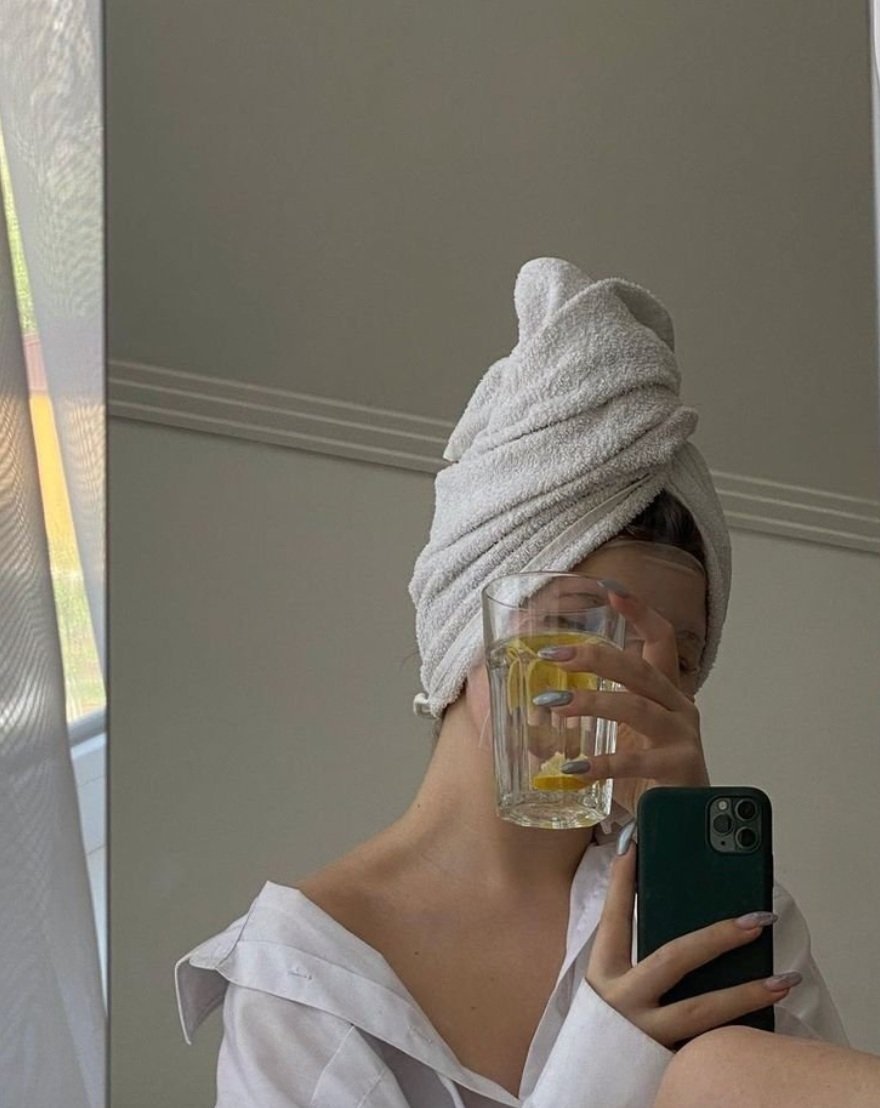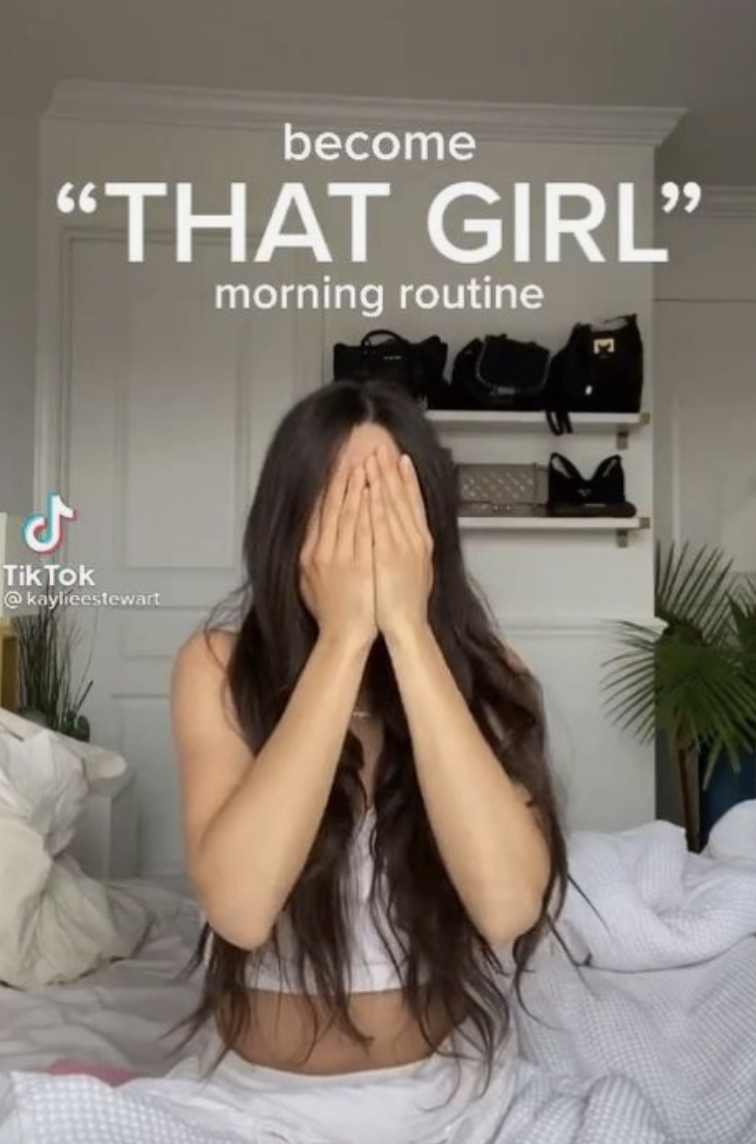The Rise and fall of the “the girl” aesthetic
The Urban Dictionary defines the term “that girl” as “a girl that gets up at 5am, meditates, drinks smoothies, has showers every day, journals, eats only healthy food, goes to the gym, every day.” As a 20-something who has recently begun her wellness journey, my Tiktok for you page is flooded with morning and night routines, Sunday resets, and Amazon storefront page hauls by influencers aspiring to be coined as the illusive “that girl” or “clean girl.” At first these videos gave me a sense of motivation, plus they were certainly aesthetically pleasing to look at, but as I spent more and more time scrolling through these videos, I’ve found myself caught in an endless cycle of never feeling good enough.
Image Courtesy: Pinterest Image Courtesy: TikTok
Of course perfection is impossible to attain, yet on social media we often forget that what we see on a screen is not always what is going on in real life. The trend with these videos on TikTok and YouTube is similar to trends that have been perpetuated across other platforms such as Pinterest and Tumblr. After all, what young girl hasn’t used social media to try and learn ways to become a more glamorous, healthy, productive, and dare I say perfect version of themselves?
On the surface level, this trend seems to be beautiful and harmless, but when we take a closer look at the content of these videos other themes emerge such as the encouragement of under-eating, over-exercising, excessive hustle culture, and an overall lack of balance throughout one's life. “That girl” is someone who never takes a day off, who never records without a smile, an essentially rebranded version of a girl boss.
In an i-D article, Carl Cederström, an associate professor at Stockholm University and co-author of The Wellness Syndrome spoke of the “that girl” trend saying, “the erosion of the line of private and profession is something you see in these trends because it means the work never ends. The work is your life itself.” Cederström went further to state his belief that “our culture of self-help generally has no purpose. You don’t ask yourself why you’re doing each of these things, you just do it.”
Naturally, there has been a rise in discussion on the Tiktok platform among those who are open about their struggles with relating to or following the “that girl” trend. Creators have been engaging in a new trend in which they post clips of themselves doing things that are considered to be the opposite of what “that girl” would do, encouraging others to be open about the less romantic aspects of their lives.
At the end of the day it is impossible to be “that girl” all the time without having inevitable burnout. Nevertheless, there is certainly something to be said for romanticizing and prioritizing one’s wellness and well being in this way. Personally, I have found that romanticizing aspects of my daily life from grocery shopping to working out to studying has made a huge difference in my ability to be more present, grounded, and happy with everything I do. In this sense, I have found the “that girl” trend to be helpful, but I also have to remember the importance of being kind to myself when I don’t meet certain goals or standards I set for myself. The next time you find yourself caught in a cycle of comparison with the videos you find on your Tiktok FYP just remember, no one can ever be “that girl” 100% of the time.
Strike Out,
Writer: Elisabeth Olsen
Editors: Katie Sharp, Natalie Daskal





